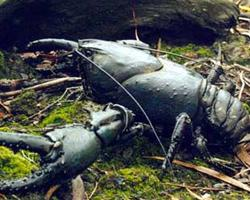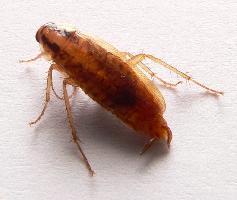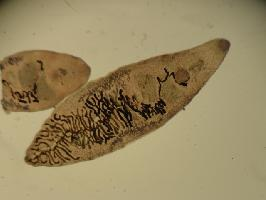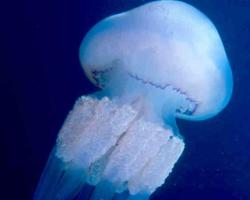
Váhy a míry
| Délka | 80 cm |
|---|---|
| Hmotnost | 6 kg |
Stav ohrožení
| Ohrožen |
Popis zvířete
The Tasmanian giant freshwater crayfish (Astacopsis gouldi), also known as the Tasmanian giant freshwater lobster, is a captivating species that commands attention due to its remarkable size and unique habitat requirements. Endemic to the cool, fast-flowing rivers of northern Tasmania, Australia, this species holds the title of the world's largest freshwater invertebrate. The crayfish's habitat is characterized by pristine, well-oxygenated water, which is crucial for its survival, making conservation efforts paramount in the face of habitat degradation and climate change.Physical Characteristics:
Astacopsis gouldi is a true giant among crayfish, with mature individuals commonly reaching lengths of up to 80 centimeters (31 inches), though there are unverified reports of specimens growing even larger. The weight of a fully grown Tasmanian giant freshwater crayfish can exceed 5 kilograms (11 pounds), with the heaviest recorded specimen tipping the scales at around 6 kilograms (about 13 pounds). The crayfish exhibits sexual dimorphism, with males typically growing larger than females and possessing larger chelae (claws) which are used in territorial disputes and during mating.
The coloration of Astacopsis gouldi varies from a dark blue-black to a brownish hue, often with patches or speckles, which provides excellent camouflage among the riverbeds and submerged logs where it dwells. Its body is robust and covered with a hard exoskeleton that provides protection against predators and the rough, rocky environment of its habitat.
Ecology and Behavior:
The Tasmanian giant freshwater crayfish is a nocturnal creature, spending much of its day hidden under riverbank recesses or submerged logs. It emerges at night to feed, primarily on decaying plant matter, although it is known to eat small fish and invertebrates as well. This species plays a crucial role in its ecosystem, contributing to the breakdown of organic matter and thus supporting the river's health.
Astacopsis gouldi has a slow growth rate and a long lifespan, with individuals living up to 40 years or more. This longevity, combined with a late sexual maturity—often not reached until they are 9 to 14 years old—makes the species particularly vulnerable to overfishing and habitat loss. The crayfish's reproductive cycle is also closely tied to its environment, with breeding typically occurring in late winter to early spring. Females carry the fertilized eggs attached to their swimmerets for several months before the young crayfish hatch and remain under the mother's protection for a short period.
Conservation Status:
The Tasmanian giant freshwater crayfish is classified as Endangered on the IUCN Red List, primarily due to habitat destruction, pollution, and illegal poaching. Its dependence on specific environmental conditions makes it highly susceptible to the effects of climate change, such as changes in water temperature and flow patterns. Conservation efforts are focused on protecting its natural habitat through legislation, promoting sustainable land-use practices, and raising public awareness about the species' plight.
Efforts to ensure the survival of Astacopsis gouldi include habitat restoration projects, stricter enforcement of fishing regulations, and research into its biology and ecology to inform conservation strategies. The species has become a symbol of Tasmania's unique biodiversity and the importance of freshwater ecosystems, inspiring both local and international interest in its preservation.
In summary, the Tasmanian giant freshwater crayfish is a remarkable species, not only for its impressive size but also for its significance within its ecosystem. Its conservation presents a challenging but crucial task, requiring a concerted effort to protect the natural beauty and ecological integrity of Tasmania's freshwater rivers.
Podobná zvířata
Nové fotografie zvířat
Top 10 zvířat
- Chinese water dragon (Physignathus cocincinus)
- Galápagos tortoise (Geochelone nigra complex)
- Dolphin gull (Leucophaeus scoresbii)
- Japanese macaque (Macaca fuscata)
- Colombian red howler (Alouatta seniculus)
- Sea urchins (Echinoidea)
- Moustached guenon (Cercopithecus cephus)
- Diana monkey (Cercopithecus diana)
- Common reed warbler (Acrocephalus scirpaceus)
- Common house mosquito (Culex pipiens)


